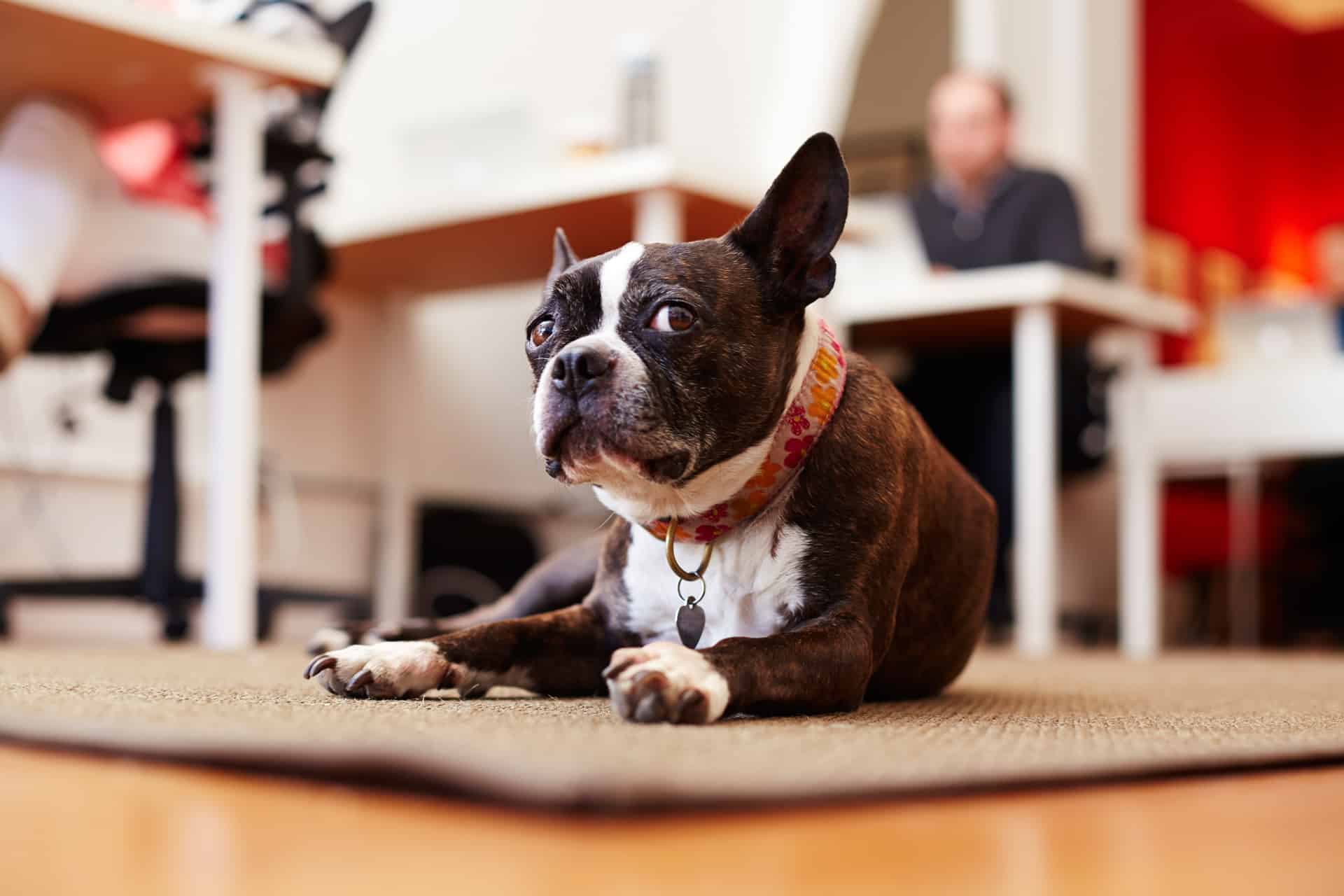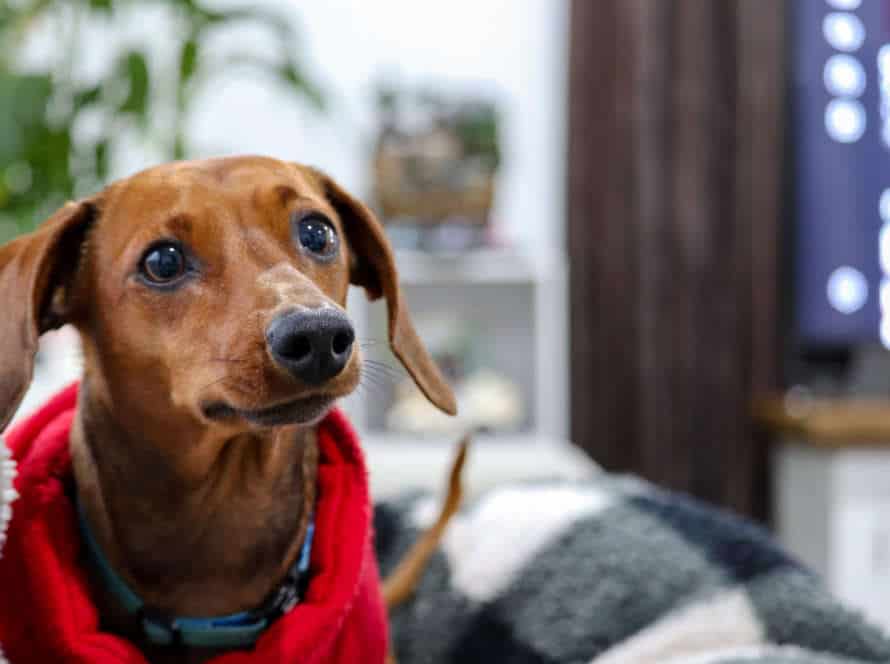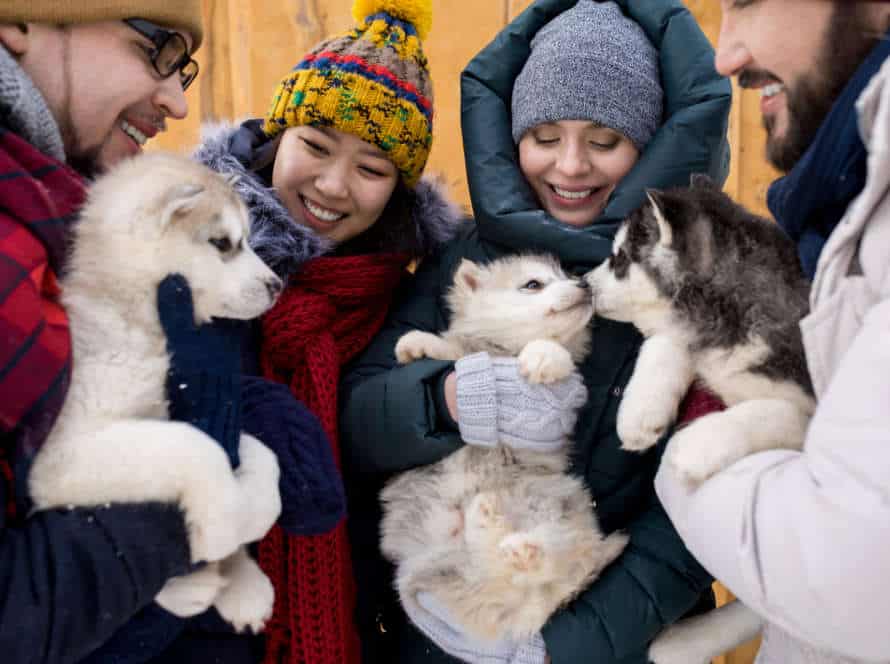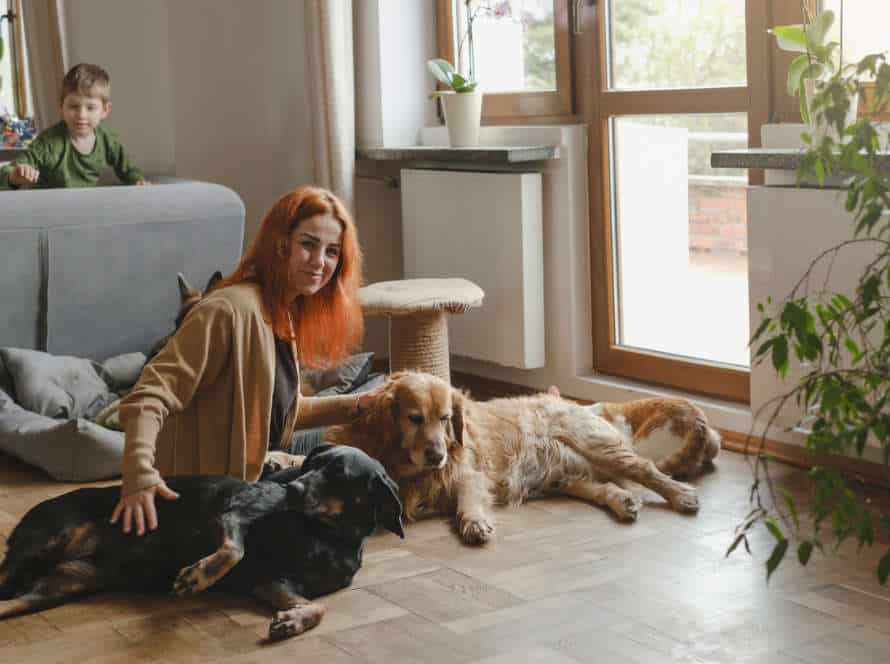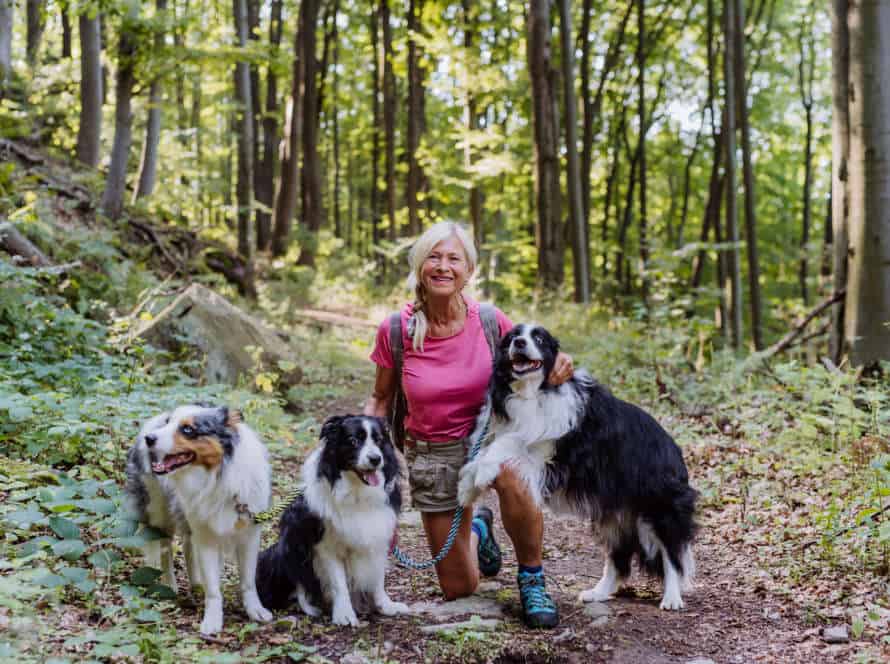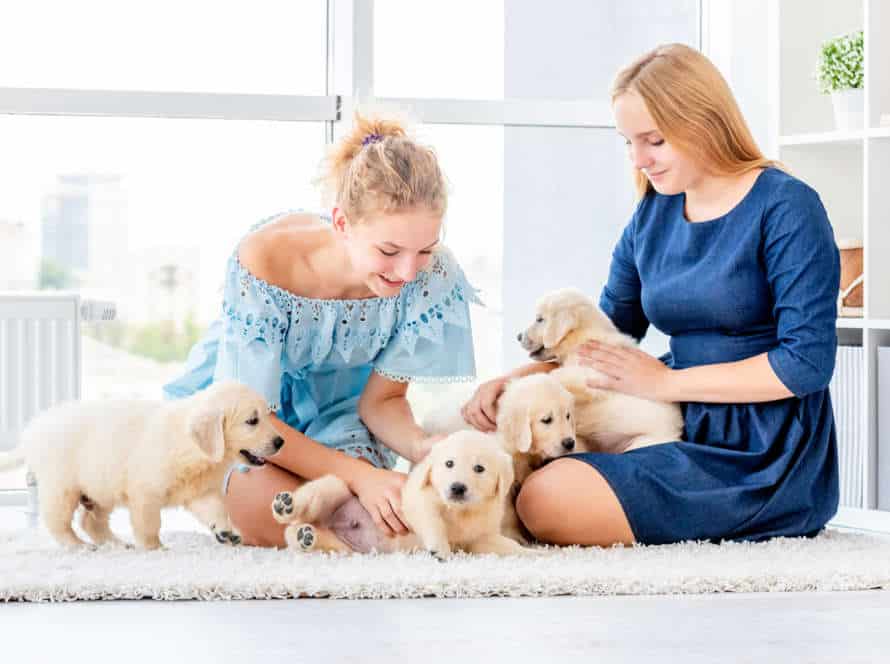Expanding Your Dog’s Comfort Zone: A Guide for Owners
Expanding your pooch’s comfort zone? Here’s a guide to help you out!
Identify triggers that make them uncomfortable. Then, start with least stressful experiences and work your way up. Use positive reinforcement to encourage and reward good behavior. Be patient and don’t push them beyond their limit. Supervise and respond calmly. Take breaks and end training sessions positively.
With time and persistence, your pup’s comfort zone will expand and they’ll be more confident in new situations.
Understanding Your Dog’s Comfort Zone
Dog owners must comprehend the concept of their pet’s comfort zone. This will help them to create a safe and relaxed environment for their pet. To understand this concept, there are a few key points to consider. This guide outlines these points and shares tips on how to expand your pup’s comfort zone.
What is a Comfort Zone?
A comfort zone is a state of security and control. It’s important to understand your dog’s comfort zone for their wellbeing. Notice when your dog is anxious and make changes. Expand your pup’s comfort zone by paying attention to their body language, preferences and personality. Start slowly with new environments and experiences. Train with positive reinforcement to make new experiences good!
Pro Tip: Positive reinforcement helps your dog’s comfort zone grow.
Signs Your Dog is Out of Their Comfort Zone
Dogs have their own comfort zones. It’s essential for pet owners to recognize when their furry friend is uncomfortable. Here are some signs:
- Tail position – tucked, high, low or rigid tail can all mean discomfort.
- Ears – pinned-back, flattened or twitching ears can be a sign of stress.
- Body posture – stiff, crouched, cowering or raised hackles can be fear or anxiety.
- Dilated pupils – if your dog’s pupils are dilated, it can be a sign of stress, fear or aggression.
- Panting – panting helps to regulate body temperature but excessive panting can be linked to anxiety.
For a positive pet-owner relationship, you must observe and act to make your dog feel safe and secure.
Pro tip: If you notice any of these signs, try to identify the source of your dog’s discomfort and remove it from their environment.
Factors That Impact Your Dog’s Comfort Zone
A dog’s comfort zone is vital for its wellbeing and happiness. Many things can affect it. Environmental factors such as loud noises, unfamiliar smells, and crowded spaces can cause stress and fear. Changes in weather, temperature, and lighting can make them uncomfortable too.
Social factors like personality and temperament can make them overwhelmed or intimidated in new situations. Introducing new people or other dogs, or attending crowded events, can all make them uncomfortable.
Physical factors like arthritis, dental problems, allergies, age, health, and nutrition can reduce comfort levels. As a dog owner, pay attention to your dog’s behavior and reactions. With the right training, socialization, and care, you can expand their comfort zone, making them happier and more relaxed in different environments.
Expanding Your Dog’s Comfort Zone
Increasing your pup’s comfortability is crucial for their growth and strengthening the connection with you. Do it securely though! Here are some advice and tactics to expand your doggo’s comfort zone.
Identifying Your Dog’s Comfort Zone Limits
Recognizing your pup’s ease zone limits is major to sidestep stress, tension, and undesired behaviour. Their comfort zone is the separation or space in which they are relaxed and secure.
Here are some hints that your dog is beyond their comfort zone:
- Pacing or looping
- Excessive panting
- Slobbering or licking their lips
- Whining, snarling, or barking
- Cowering or concealing
To increase your dog’s comfort zone, initially identify the things that cause your dog’s anxiety or stress. Then, slowly present your pup to these triggers in a controlled and positive way, utilizing rewards or toys as incentives for decent behaviour.
Bear in mind to go slowly and respect your pup’s limits. Overwhelming them too hard or too quickly can have the different impact and make them more fearful or anxious.
Pro Tip: Positive reinforcement is essential to enlarge your dog’s comfort zone. Don’t forget to reward good behaviour and progress at your pup’s tempo.
Exposure Therapy for Expanding Comfort Zone
Exposure therapy is a great way to help expand an individual’s and a pup’s comfort zone. When done correctly, it can aid in overcoming worries, phobias, and other issues that keep your four-legged buddy from feeling relaxed. Here’s how:
Begin by introducing your pup to low-stress situations that are just beyond what they’re used to, e.g. a new toy or another dog. Increase the stimulation level slowly, but only move on to the next level once your dog has adjusted to the current one. Be persistent and consistent with the technique, and reward positive behavior.
Done properly, exposure therapy can help your pooch lead a more content, fulfilled life with no fear or anxiety.
Gradual Desensitization Training for Expanding Comfort Zone
Gradual desensitization training is a great way to help your dog get comfortable with new environments.
The idea is to gradually introduce them to the stimulus, like a sound.
Start small and reward them for staying calm.
Slowly increase the intensity and reward progress. This could take weeks or months.
Be patient, stay calm and be sure to reward them.
Eventually, your pup’s comfort zone will be expanded and you can enjoy new experiences together!
Common Situations Where Dogs May Be Out of Their Comfort Zone
Vet visits, other pups around, and being in a crowd – all these situations can take your pooch out of their comfort zone. If they feel uneasy, they may act nervous or anxious. We’ve got the scoop on how to help your fur baby stay calm in these situations. Check out this guide for ideas!
Vet Visits
Vet trips can be nerve-wracking for pups and their owners. Here’s some common scenarios where dogs may not be chill and advice on how to help them relax:
- Touching: Many pooches are scared or edgy when touched by strangers, especially in sensitive areas like ears, paws, and tail. To help your dog calm down, do gentle, positive touching of these areas regularly.
- Car rides: Some doggos may not dig car rides to the vet, being queasy, anxious, or scared. To make them feel more comfy, start with short drives around the block and slowly increase the distance. Plus, use treats and praise to reward chill behaviour in the car.
- Crowded waiting rooms: A lot of doggos can get overwhelmed or anxious in crowded waiting rooms with other pets and people. To make them less nervous, bring a favourite toy or blanket and try to make an appointment at less busy times.
By following these tips, you can make vet visits easier for your pup. Pro tip: Regular vet visits are essential for your pet’s health, so make it as positive as possible.
Grooming and Bathing
Start young with grooming and bathing for your pup. It’s vital for their health and comfort. To make it a positive experience:
- Use positive reinforcement like treats, toys and praise.
- Gradually increase the time spent.
- Be patient and take breaks when needed.
- Pro tip: Use a non-slip mat in the bathtub. It will make them feel safe.
Socializing with Other Dogs
Dogs are social creatures, so socializing is crucial. Yet, some situations can be intimidating for them. Knowing these scenarios and expanding their comfort zone can help them socialize better.
Common situations which may scare dogs include:
- crowded places
- new environments
- meeting unknown dogs
- being around unfriendly or aggressive dogs
Here are some tips to expand their comfort zone while socializing:
- Gradually introduce your dog to different people, places, and other dogs.
- Use treats and praise to make them feel relaxed in new scenarios.
- Keep the sessions short and fun, to not tire them out.
- Read their body language, and be aware of when they’re anxious or uncomfortable.
With patience and effort, you can help your pooch enjoy a happy and fulfilling social life.
Tools and Techniques to Help Your Dog
Dogs are pack animals. So, structure and a supportive environment can give them comfort in new scenarios. Focusing on their emotional needs and giving them easy tools and techniques can help them feel safer. Here are some of the best methods to help pooches expand their comfort zone:
Body Language Cues to Look for in Your Dog
Grasping your pup’s body language is vital for setting up a strong bond with them. Here are some major signs to look out for:
- Ears – A calm dog’s ears rest normally. An anxious dog’s ears will be perked up.
- Eyes – A relaxed dog’s eyes look soft and narrow. A nervous dog’s eyes will be wide and round.
- Tail – A chilled-out dog’s tail hangs naturally or wags in a broad curve. A scared dog’s tail stands up stiffly.
- Body posture – For a peaceful pup, their shoulders are even to the floor. An anxious dog’s shoulders will be curled up.
- Proximity – A serene dog moves calmly and awaits petting. An apprehensive dog may move away or tuck their tail.
In the end, understanding your dog’s body language is key to spotting their pleasure, unease, and fear. By viewing and monitoring their body language, you’re giving your pup the best chance to feel content, lively, and secure.
Calming Aids and Supplements
Searching for a way to help your four-legged friend relax? Calming tools and supplements could be the answer! These techniques can help your pup feel more secure.
Here are some calming aids and supplements to consider:
- Calming treats: Contain natural ingredients such as chamomile, passionflower and valerian root. This can soothe your dog without causing drowsiness.
- Essential oils: Lavender and chamomile have calming properties. But use them cautiously, and always dilute them properly before use.
- Thunder shirts: Tight-fitting vests can help calm anxious dogs. They do this by applying gentle pressure and creating a swaddling effect.
- Adaptil collars: Release a synthetic version of pheromones. These pheromones mimic ones dogs produce when they feel safe.
Before giving your pup any supplements, check with your vet to be sure it’s safe.
Interactive Toys for Anxiety Relief
Interactive toys are a great way to reduce anxiety in dogs. They provide stimulating activities and a sense of familiarity. Here are a few options:
- Puzzle toys: Require critical thinking, this helps anxious dogs stay calm. Fill them with treats for entertainment.
- Scented toys: Provide comfort and reduce anxiety. Rub the toy on places your dog likes for extra calming effect.
- Chew toys: Stimulation and distraction from anxiety triggers.
Remember, these toys alone won’t fix everything. Consult a vet or trainer for a comprehensive approach.
Patience and Consistency with Your Dog
Patience and consistency are essential when it comes to expanding a pup’s comfort zone. Let’s build a positive bond with our pet and make sure the environment is secure. This will help us teach them to be okay with new things. Remember, dogs learn through repetition. So, be consistent in your training.
Here are some strategies to help introduce your furry friend to novel environments and experiences:
Understanding That Expanding Comfort Zones Takes Time
Enhancing your pup’s comfy area needs time, forbearance, and steadiness. As a dog owner, it’s essential to comprehend that your pooch may be uneasy with some scenarios and that pushing them too far too fast can lead to fear and hostility. Broadening your pup’s comfort zone takes a step by step approach and plenty of positive reinforcement. Here are a few tips to assist you:
- Start minor and increase the difficulty level bit by bit.
- Be patient and consistent. Let your dog go at their own speed, and don’t push them too far too quickly. Regularity is paramount to constructing trust and assurance.
- Use positive reinforcement. Compensate your pup with snacks, commendation, and fondness when they display good behaviors in demanding situations.
- Seek professional help. If you’re having difficulty expanding your pup’s comfort zone, look for the advice of an expert dog trainer or behaviorist.
Bear in mind, each pup is different, and what works for one may not work for another. With time, patience, and consistency, you can support your pup overcome their anxieties and become more confident in new and testing scenarios.
Importance of Reinforcement and Positive Feedback
Reinforcement & positive feedback are vital for training & expanding a dog’s comfort zone. Dogs respond better to rewards & praise than punishment or negative reinforcement. Consistent training & patience is essential for lasting results.
Whenever the dog behaves as desired, reinforce it with a treat & praise. Make it a habit to reward good behavior each time, & eventually they’ll understand what leads to rewards.
Consistency in training is crucial. Everyone in the home should be on the same page with the dog. If everyone is consistent, the dog will learn faster & remember better.
Training takes patience. No dog learns everything overnight. Patience leads to better results & a stronger bond between owner & dog.
Celebrating Your Dog’s Progress
Celebrating your pup’s progress is an important part of training them. Patience and consistency are key! Here are some ways to celebrate:
- Positive reinforcement – rewards, toys, and praise for good behavior and progress.
- Track milestones – maintain a log to track progress, like sitting on command or walking on a leash.
- Quality time – spend time doing activities your dog loves, like fetch or a walk in a new park.
- Remember, take it slow – gradually expanding their comfort zone is key for progress.
Frequently Asked Questions
1. What does it mean to expand my dog’s comfort zone?
Expanding your dog’s comfort zone means gradually introducing and acclimating your dog to new people, places, and experiences in a controlled and positive way. This helps your dog feel more comfortable and less fearful or anxious in unfamiliar situations.
2. Why is it important to expand my dog’s comfort zone?
Expanding your dog’s comfort zone can help prevent behavior problems such as aggression, fearfulness, and destructive behavior. It can also enhance your dog’s well-being by providing mental stimulation and increasing their socialization skills.
3. How do I know if my dog is uncomfortable in a new situation?
Your dog may display signs of discomfort such as trembling, panting, avoiding eye contact, excessive licking or yawning, growling, or cowering. They may also attempt to escape the situation or become aggressive.
4. How do I safely introduce my dog to new experiences?
Start by exposing your dog to new experiences gradually and in a controlled environment, and reward them for calm and relaxed behavior. Use positive reinforcement training techniques and avoid overwhelming your dog with too much too soon.
5. Can all dogs benefit from expanding their comfort zone?
Yes! Even dogs who are naturally social or confident can benefit from exposure to new experiences. However, dogs who have a history of aggression, fearfulness or trauma may require specialized training or professional help.
6. How long does it take to expand my dog’s comfort zone?
Expanding your dog’s comfort zone is a gradual process and can take anywhere from a few weeks to several months depending on your dog’s personality, history, and individual needs.

